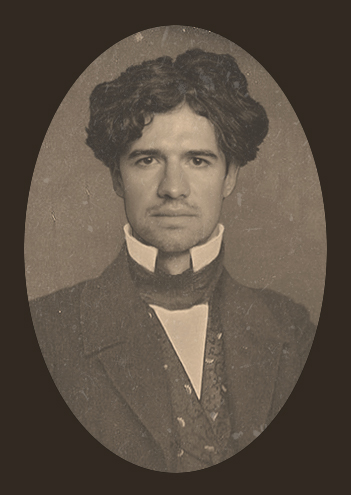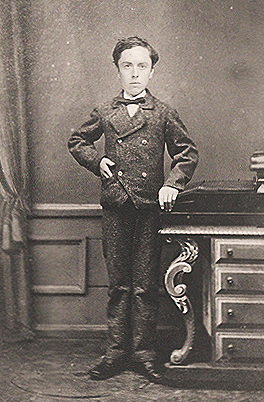SUB ROSA
Latin: "under the rose"…a place for secrets and confidentiality.
Welcome to our Sub Rosa page - join us and gain hidden insights into the show.
+ Who was Edgar Allan Poe?
 |
+ Who was the child?
Edgar Allan Poe’s younger self
 |
+ What facets of Poe did the characters represent?
|
Addiction, Compassion, Depression, Faith, Innocence, Intimacy, Lost Love, Lust, Madness, Mischief |
+ Who was Poe’s lost love?
|
Poe’s works are haunted by doomed maidens and love from beyond the grave. This was likely fuelled by his tragic personal life: every woman Poe loved died or rejected him. Poe’s mother died when he was 2 years old, his first boyhood crush when he was 15, and his foster mother when he was 20. He famously wrote, “The death then of a beautiful woman is unquestionably the most poetical topic in the world, and equally is it beyond doubt that the lips best suited for such topic are those of a bereaved lover.” What follows are some of the women Poe loved and lost: Virginia Eliza Clemm Poe met his cousin Virginia Eliza Clemm when she was 7 years old and he was 21. During the years he lived with her and his Aunt Maria, she became a messenger for the love notes passed between Poe and their neighbour. Instead, Poe grew fond of Virginia and they officially married on May 16, 1836, when Virginia was 13. While it was not unusual for first cousins to marry, it was uncommon for a girl to be married at such a young age. By all accounts, they were enamoured of each other; Virginia was one of Poe’s greatest muses. However, one chill winter day, she began to bleed from her mouth – the first symptom of consumption. She wasted away for 6 years before succumbing to the disease. Virginia’s illness and death drove Poe into despondency and heavy drinking. Sarah Elmira Royster Shelton Shelton was Poe’s first and last love. They were sweethearts when Poe was 16, but Sarah’s father disapproved of the relationship and broke their engagement. Shelton married another man, but years later, Poe reconnected with her as widow and widower. Poe told her she was his “Lost Lenore.” It’s speculated that he wrote The Raven and Annabel Lee about her, though he never explicitly cited his inspirations. Poe mentioned their impending wedding, but just 10 days before their nuptials, he died. Since Shelton rarely spoke of Poe, the exact nature of their relationship remains shrouded in secrecy and it’s uncertain whether they were truly engaged a second time. Sarah Helen Power Whitman Whitman was a poet, essayist, and suffragist, who wrote feminist tracts questioning why average young men “mediocre in intellect” are thought to be “a matrimonial prize worth securing, at any sacrifice of a young woman’s progressive tastes and opinions.” She was an ardent admirer of Poe’s works and after meeting Poe in the aftermath of Virginia’s death, they exchanged passionate poems and letters. When Poe proposed, Whitman was hesitant due to his alcoholism. She accepted on the condition that Poe stopped his destructive habits, but when he was unable to remain sober, she broke off the engagement. Frances Sargent Osgood Osgood was one of the most popular American women writers of her time. She and Poe exchanged anonymous love poems, but the exact nature of their relationship is contested. Theories range from a platonic literary courtship to a public flirtation to the dubious suggestion that they had a bastard child together. Poe was still married to Virginia at the time. Franny was also married, but may have been estranged from her husband. Virginia encouraged their friendship, since Poe was never intoxicated when he was with Osgood and she believed Osgood was a tempering influence. However, after salacious rumours were spread about Osgood and Poe, they eventually severed all relations. |
+ What was so strange about the circumstances of Poe’s death?
|
The father of the detective story left behind a peculiar real-life mystery. Poe was traveling from Richmond, Virginia to Philadelphia when he disappeared. Six days later, he was found in Baltimore, semi-conscious and wearing shabby clothes that were not his own. For days, he tossed and turned in a feverish delirium. He repeatedly called for “Reynolds”, though no one has been able to identify whom he referred to. At 5am on October 7, 1849, Poe spoke his last words, “Lord, help my poor soul” and died. He was never coherent enough to explain his condition. All hospital records, including his death certificate, have been lost. Modern theories on his cause of death include: suicide, murder, a brain tumour, beating, hypoglycemia, influenza, alcohol poisoning, syphilis, rabies, and that he was a victim of cooping, in which citizens were kidnapped, intoxicated, and forced to vote again and again. |
+ Who was Reynolds?
|
It remains unknown whom Poe shouted for on his deathbed. There are three primary theories:
|
+ Who was Mackenzie?
|
Rosalie Mackenzie Poe was Edgar Allan Poe’s younger sister. After their parents’ death, the Poe children were split up and Rosalie lived with William and Virginia Mackenzie until the Civil War impoverished the family. Homeless and destitute, Rosalie eventually resorted to selling pictures of Edgar on the streets. She also forged his autograph and attempted to peddle ordinary household items that she claimed Edgar once owned. It was speculated that Rosalie had developmental disabilities. Though Rosalie and Edgar had a distant relationship, she deeply admired her brother and attended his readings and lectures. Rosalie died alone in Epiphany Church Home aged 68, the only one of her siblings to live to old age. Strangely, her tombstone marked her year of birth as 1812, a year after her mother’s death. |
+ What stories from Edgar Allen Poe’s writings were represented in the show?
|
